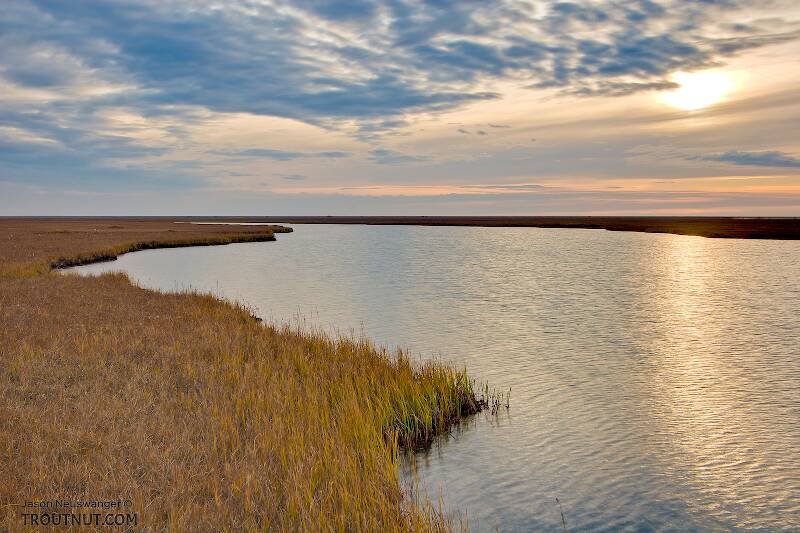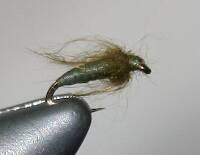
Hex Mayflies
Hexagenia limbata
The famous nocturnal Hex hatch of the Midwest (and a few other lucky locations) stirs to the surface mythically large brown trout that only touch streamers for the rest of the year.
Featured on the forum

Troutnut is a project started in 2003 by salmonid ecologist Jason "Troutnut" Neuswanger to help anglers and
fly tyers unabashedly embrace the entomological side of the sport. Learn more about Troutnut or
support the project for an enhanced experience here.
Lastchance on Jun 30, 2008June 30th, 2008, 11:59 am EDT
I live in central/western, pa. What colors are the grasshoppers in this area? I guess I mean the part the fish sees. Also, would you tie them in sizes 8 and 10? Are they tan and olive?
Thanks
Thanks
Trtklr on Jul 2, 2008July 2nd, 2008, 9:28 am EDT
I would suggest to go outside and walk around some tall grass in mid day. you should see some jump around. I tie mine with a light tan body with grizzly wrap, but I bet ours here in michigan have a darker body. I am a firm believer that proportions are more important than color. I use a #10 streamer hook. yeah it floats no problem
I have seen nothing more beautiful than the sunrise on a cold stream.
GONZO on Jul 2, 2008July 2nd, 2008, 10:56 am EDT
Bruce,
We have lots of different grasshopper species in PA, but Scott is probably right--the exact color shouldn't matter that much unless the trout are seeing a heavy concentration of only one species.
I suppose that could happen when the Carolinas (the strong fliers that display black underwings with light borders when in flight) are flying around en masse, but I don't think these actually hit the water as often as some of the weaker fliers. Other fairly common hoppers that we see include the Differential, Red-Legged, Migratory, and Bird (American and Alutacea). Most of these have yellowish, yellowish-brown, or yellowish-gray bodies. (The Red-Legged can be olive as well.)
Size varies with species and time of year, but when the adults are active in the summer, 2X- or 3X-long #8s and #10s make for a pretty good average. One opportunity that fly fishers sometimes miss comes when the young nymphs ("baby" grasshoppers) are hanging out on streamside bushes earlier in the season. Then, a smaller (#12 or #14) wingless imitation in yellow, gray, or olive can be a killer for trout that lurk beneath the bushes.
I hope that helps.
We have lots of different grasshopper species in PA, but Scott is probably right--the exact color shouldn't matter that much unless the trout are seeing a heavy concentration of only one species.
I suppose that could happen when the Carolinas (the strong fliers that display black underwings with light borders when in flight) are flying around en masse, but I don't think these actually hit the water as often as some of the weaker fliers. Other fairly common hoppers that we see include the Differential, Red-Legged, Migratory, and Bird (American and Alutacea). Most of these have yellowish, yellowish-brown, or yellowish-gray bodies. (The Red-Legged can be olive as well.)
Size varies with species and time of year, but when the adults are active in the summer, 2X- or 3X-long #8s and #10s make for a pretty good average. One opportunity that fly fishers sometimes miss comes when the young nymphs ("baby" grasshoppers) are hanging out on streamside bushes earlier in the season. Then, a smaller (#12 or #14) wingless imitation in yellow, gray, or olive can be a killer for trout that lurk beneath the bushes.
I hope that helps.
Quick Reply
Related Discussions
Topic
Replies
Last Reply
1
Aug 21, 2007
by Gene
by Gene
7
Jan 22, 2010
by Taxon
by Taxon
0
Jun 29, 2020
by Wiflyfisher
by Wiflyfisher



